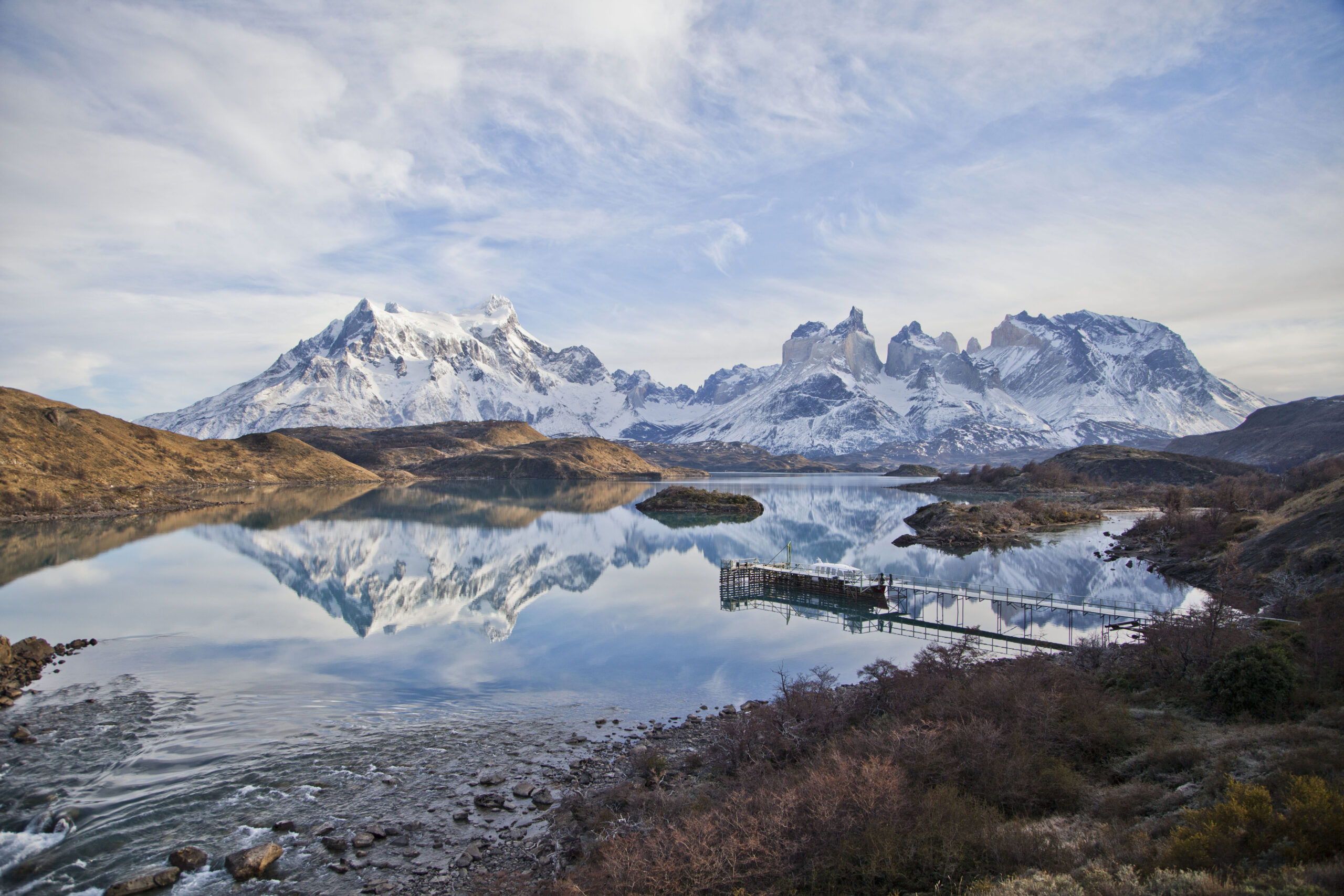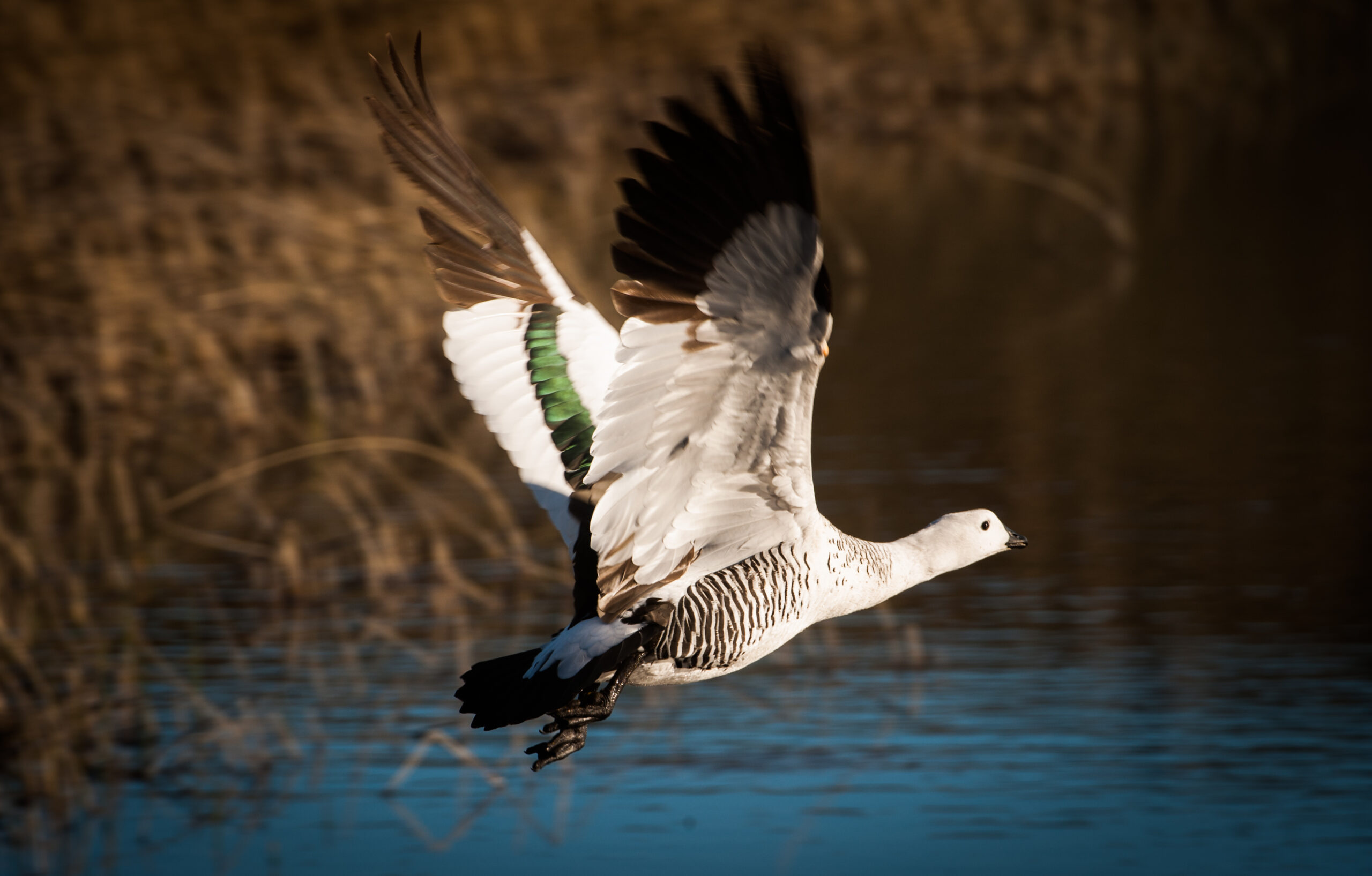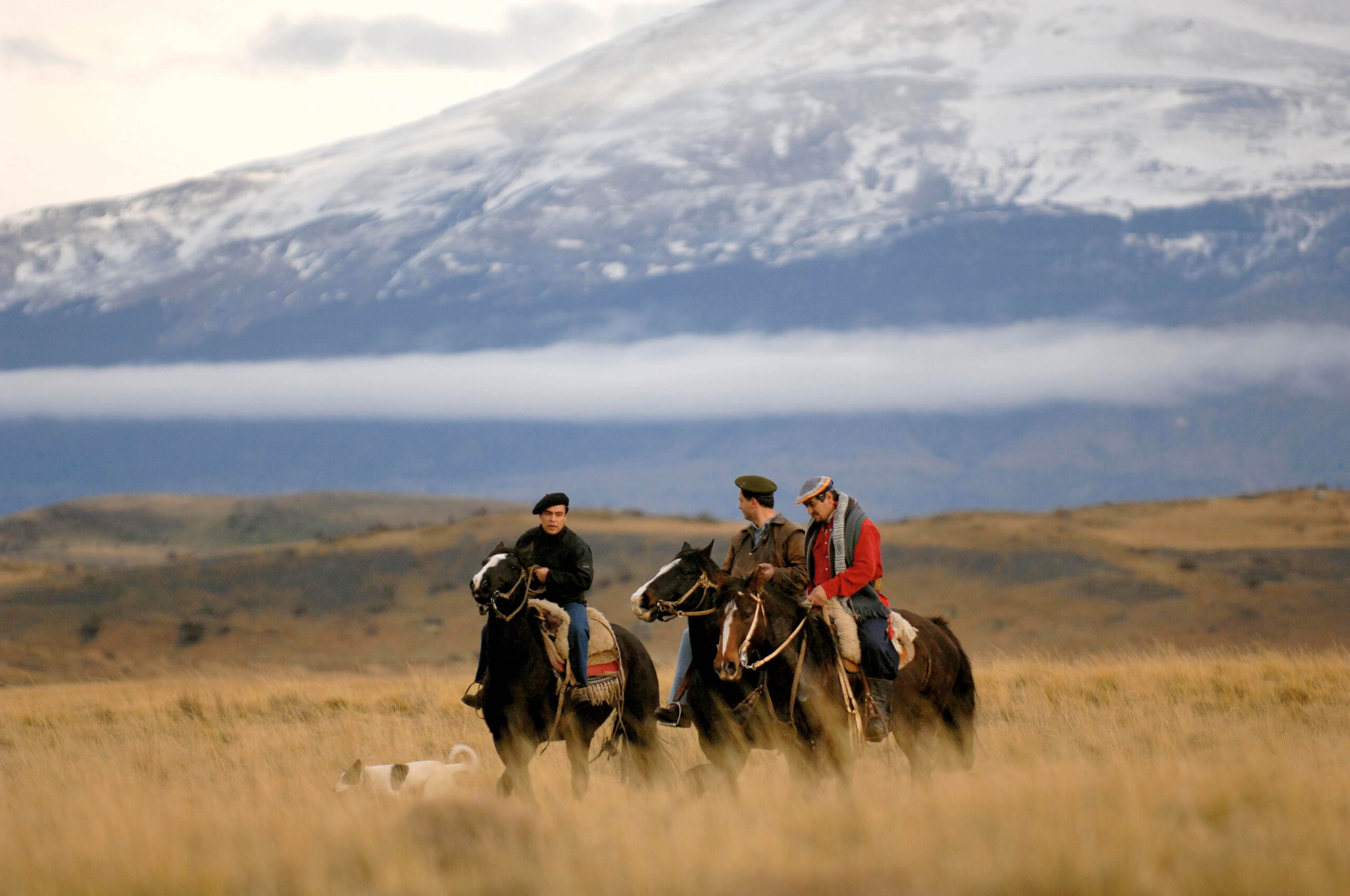Explora’s Torres del Paine Conservation Reserve
Conservation & Exploration
Three decades of Explora’s engagement and understanding of Patagonia have reinforced the expedition company’s deep concern for the territory in which it operates, its dwellers, and visitors. Defining exploration as a journey into conservation, all things Explora can be traced back to the company’s beginning in Chile’s Patagonia’s Torres del Paine National Park in 1993. Spanning two countries, Chile and Argentina, the region is known as “Finis Terrae” or “The Uttermost Part of the Earth.” The long journey to Patagonia is rewarded by millenary landscapes of ice, stone, vibrant rivers, native forests, steppes, and abundant wildlife.
Patagonia’s original inhabitants were the Kawéskar, Yaghan, Selknam, and Aónikenk people. Researchers often group the different indigenous tribes as the Tehuelche based on the similarities in their cultural traits, languages, and geographic vicinity. Today, the land is home to Gauchos, who practice ancient traditions in their everyday life, welcoming visitors with the natural hospitality of a territory defined by distance and solitude.

Explora’s Conservation Journey
In 2019, Explora began its reserve journey, undertaking a comprehensive study of flora and fauna of 6,000 hectares (14,800 acres) of protected land near the outer and eastern edge of Torres del Paine National Park. The findings confirmed a region of rich and unique biodiversity. A conservation plan is in development with specific areas within the Conservation Reserve dedicated to strict conservation. Among the study’s findings: Some 20% of flora species are unique to the Magallanes region and critical for protection and multiple fauna species were previously unrecorded in Chile. Additionally, 140 avian species were found, and so far, 40 identified; they include rheas, flamingoes, condors, and the black-necked swan. The area is home to close to 130 species of plants and 15 species of mammals, including armadillos, guanacos, and pumas. Explora installed camera traps across the protected lands to understand the presence of pumas and their behavior in the territory. Resident Gauchos periodically check the cameras for new findings.


The Vision
Currently in development, the Conservation Reserve offers a unique opportunity to explore and conserve Patagonia’s essence in the spirit of a traditional Estancia. Meant to be a living space where travelers, visitors, park rangers, guides, researchers, and volunteers can support and participate in a wide range of explorations and conservation experiences.
Guests will explore the Reserve on foot and horseback as trails and the Conservation House are created. Trained Explora guides will lead them into the Conservation Reserve and share findings, explore and explain sustainable initiatives, including a vegetable garden that will supply the Explora and Guest House kitchens. A tree nursery will be a vital element of the Reserve where guests can learn about native trees and the crucial importance of reforestation work in the region. Tree planting will also be available.

95% Exploration & Conservation
In alliance with The Nature Conservancy, Explora is establishing an innovative model of conservation and tourism that can be replicated elsewhere in the world. As philanthropy often fades in the long run, the Conservation Reserve introduces a venture that enables the expansion and acceleration of conservation in perpetuity. Based on a sustainable model that joins business enterprises with non-profit commitment, the Explora Reserve grants 95% of their territory purely to exploration and conservation. The remaining 5% is subject to enterprises that include tourism, real estate, research, and other facilities, meant to bring people together to support and participate in a wide range of conservation projects.
